Snowflakes signal an end to Winter.
Snowflakes ( Leucojum vernum ) are a late Winter flowering bulb. The leaves grow up to around 40cm high and the pretty flowers, which appear amongst the leaves, are mostly white with coloured spots on the bottom of the petals. The deep green clumps , which grow ever larger each year are very attractive in a garden setting. For best results, grow them in a semi-shaded spot. They will tolerate most of Australia's climate zones ( cool- temperate to warm ). Snowlflakes are available in nurseries in Autumn as a dormant bulb. I spotted these flowering bulbs in a local sydney garden, planted amongst Yellow Jonquils ( a type of Daffodil ), and they were putting on a wonderful display.
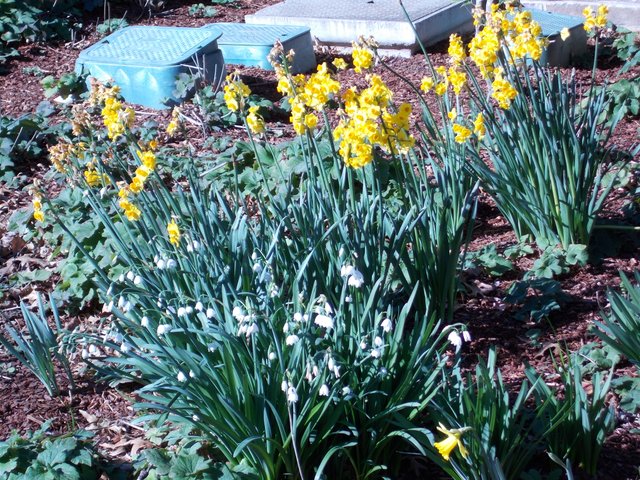
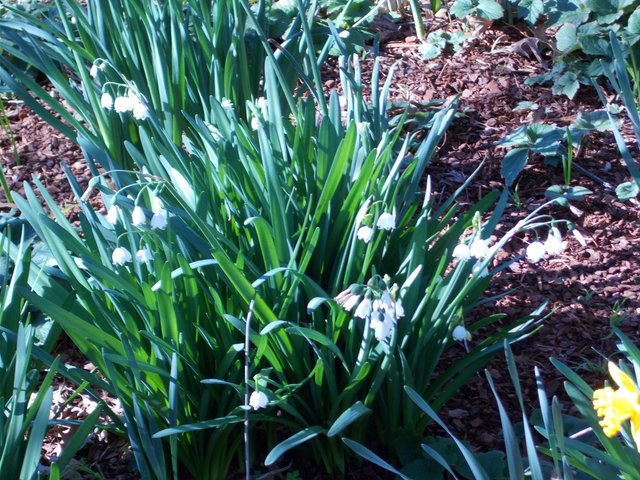
Thank you @ctrl-alt-nwo, for posting these lovely flowers....'Snowflakes'.
Lovely photographs and write-up.
They appear to lend a quiet place in the garden with their white fleurs and bleu-green toned leaves......appreciate the introduction.
All the best.
Cheers!
Snowdrops (Galanthus nivalis) are delicate in appearance and need a cold climate to prosper, so are considered to be rare and unusual. They are temperamental and difficult to grow in most Australian gardens, and the bulbs are expensive to buy.
Snowflakes (Leucojum aestivum;pictured main), on the other hand, hail from Central Europe and grow in our gardens without a murmur, which somehow makes them seem less important.
But forget your prejudices and enjoy the snowflakes. If you don’t have them growing, plant some in autumn when the bulbs are on sale (and, by the way, these bulbs are inexpensive).
source= http://www.homelife.com.au/gardening/plant-guides/plant-guide-snowdrops-and-snowflakes
Fav.comment Award !! Great pics. Thanks.
Flower Snowflakes, beautiful and very charming. All eyes that see it, are tempted.
As for the characteristics, as follows:
Here are some collections that I downloaded on Google!
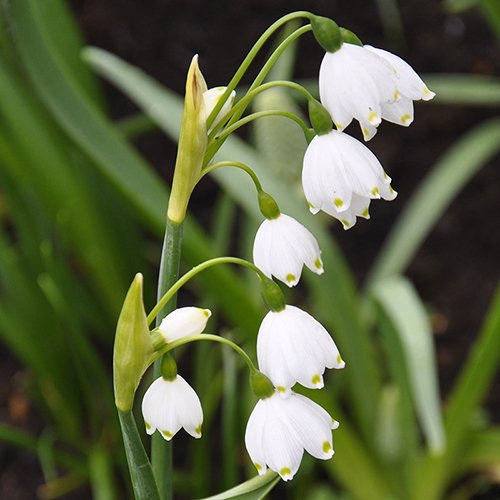
.png)
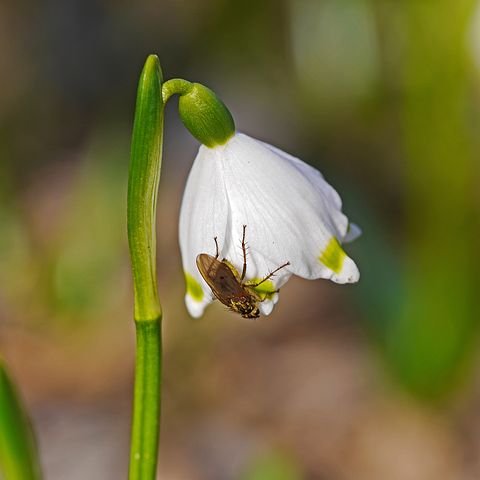
.png)
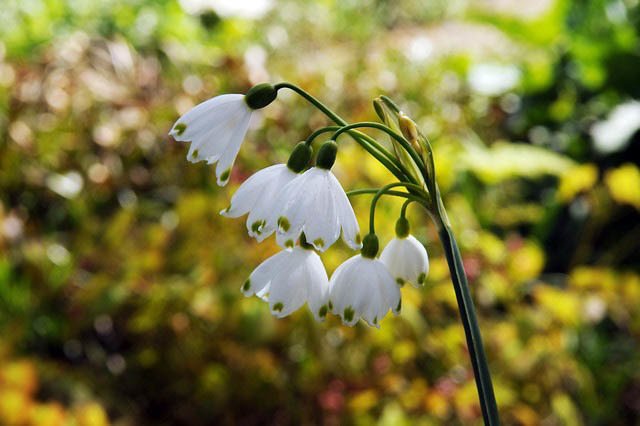
.png)
Source :
https://www.google.com/search?safe=strict&q=Leucojum&stick=H4sIAAAAAAAAAOPgE-LWz9U3MDSwKMi2zFXiBHGM0owyirQss5Ot9JMy83Py0yv184vSE_Myi3Pjk3MSi4sz0zKTE0sy8_OsMjLTM1KLFFBFAQpjSshVAAAA&sa=X&ved=2ahUKEwix-pqSxIDdAhUXX30KHTYNBLwQmxMoADAPegQICRBL&biw=360&bih=598
Fav. comment Award !! You selected great Pics .
Leucojum vernum
Spring snowflake (St. Joseph’s bells)
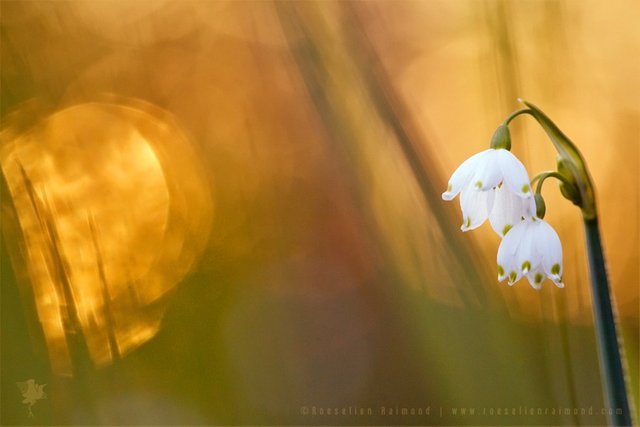
Source
The spring snowflake is an early bulb reminiscent of snowdrops (Galanthus), though with a more robust habit. It blossoms in early spring as soon as the snow has melted, or even through melting snow, with bell-like and faintly scented white flowers with yellow (L. vernum var. carpathicum) or green (L.vernum var. vernum) tips at the end of their tepals.
Source
Source
This plant may be difficult to grow in the garden, but once the right spot has been found, it forms a large clump and will slowly begin to spread. They seem to thrive best in ground that is damp all spring but dries up in the summer. The bulbs should be planted early in the autumn as they do not survive long storage.
Source
Source
Text Source
Leucojum are amazingly adaptable plants, growing well from chilly parts of Maine to toasty areas in Southern California. Also known as snowflakes, there are two varieties that extend the flowering season.
Unlike most bulbs, snowflakes can thrive in soil that is moist, like that found along the edge of a pond or stream. Leucojum are not eaten by deer, rabbits or rodents. Snowflakes are also excellent naturalizers.
Leucojum vernum has been awarded the prestigious Award of Garden Merit by the British Royal Horticultural Society, a highly sought after honor.
Resources
Despite the name, summer snowflake bulbs (Leucojum aestivum) bloom in mid to late spring in most areas, just a couple of weeks after the spring snowflakes (Leucojum vernum). Both bulbs have grass-like foliage and dainty, fragrant drooping bells. They look almost exactly like snowdrops (Galanthus nivalis), which blooms a couple of weeks before spring snowflakes. You can tell the difference between the two flowers by the fact that snowflakes have a green dot at the tip of each of its six petals, while snowdrops have dots on only three of its petals. Nothing could be easier than snowflake plant care.
Summer snowflakes are the larger of the two plants, growing 1 1/2 to 3 feet tall. The foliage of spring snowflake bulbs grows about 10 inches tall and the flowers bloom on 12-inch stalks. Unlike some spring bulbs, the snowflake’s foliage lasts a long time after the flowers fade. Growing snowflake Leucojum at the back of a low-growing perennial border creates an interesting backdrop for late spring and early summer-blooming flowers.
https://www.gardeningknowhow.com/ornamental/bulbs/snowflakes/growing-snowflake-bulbs.htm
The spring snowflake is a popularly cultivated bulbous plant with delicate white flowers, and belongs to the same family as the snowdrops.
The spring snowflake was described as Leucojum vernum by the renowned Swedish botanist Carl Linnaeus in 1753. The scientific name means 'spring white violet' (Leucojum means 'white violet' and vernum means 'spring'). L. vernum is a widely cultivated, hardy, frost-tolerant plant, notable as a good early nectar and pollen source for bees.
Although both snowflakes (Leucojum species) and snowdrops (Galanthus species) belong to the family Amaryllidaceae, they have clear differentiating characters. While snowflakes have six equal tepals (petals and sepals that are similar to each other), in snowdrops the three inner tepals are shorter and broader than the three outer tepals.
The spring snowflake is native to Central Europe (extending to Belgium, the Pyrenees, northern Italy, and Bosnia and Herzegovina) and has become naturalized in other regions, such as the British Isles and North America.
Images searched from google
Content source: http://powo.science.kew.org/taxon/urn:lsid:ipni.org:names:65769-1
Despite the name, summer snowflake bulbs (Leucojum aestivum) bloom in mid to late spring in most areas, just a couple of weeks after the spring snowflakes (Leucojum vernum). Both bulbs have grass-like foliage and dainty, fragrant drooping bells. They look almost exactly like snowdrops (Galanthus nivalis), which blooms a couple of weeks before spring snowflakes. You can tell the difference between the two flowers by the fact that snowflakes have a green dot at the tip of each of its six petals, while snowdrops have dots on only three of its petals. Nothing could be easier than snowflake plant care. Summer snowflakes are the larger of the two plants, growing 1 1/2 to 3 feet tall. The foliage of spring snowflake bulbs grows about 10 inches tall and the flowers bloom on 12-inch stalks. Unlike some spring bulbs, the snowflake’s foliage lasts a long time after the flowers fade. Growing snowflake Leucojum at the back of a low-growing perennial border creates an interesting backdrop for late spring and early summer-blooming flowers.
.
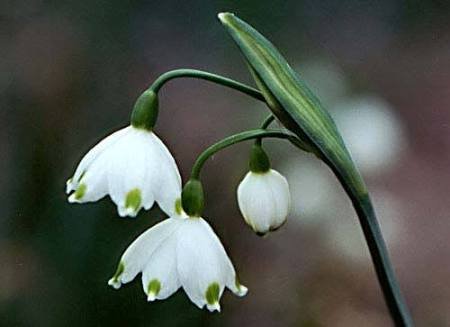.jpeg)
Source
.
When spring arrives, the plant’s only demand is moist soil. Water the plants deeply and thoroughly when rainfall is less than 2 inches per week. Keep up the watering schedule as long as the plant is growing. Snails and slugs love to dine on snowflakes. If you see their slime trails in the area, it’s a good idea to set out traps and baits in spring. Some bait is harmless to children, pets and wildlife while others are quite toxic.
.
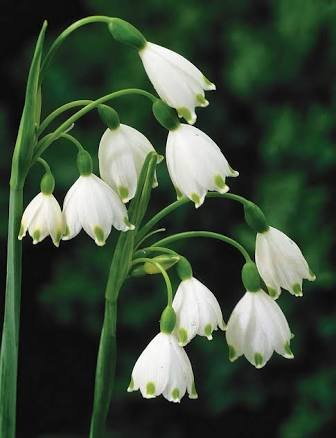.jpeg)
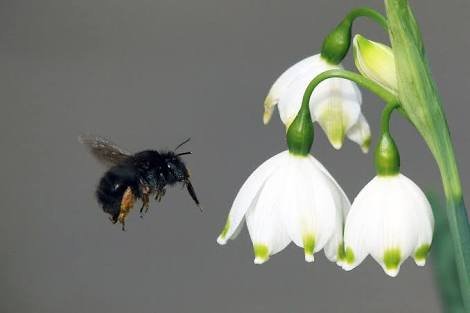.jpeg)
Source
.
Source
I think you have hard time deciding which bulbs to plant around the house. This one look nice and easy to maintain.
In Europe these are called The bells and are the official signs in nature that spring has finally come.
@ctrl-alt-nwo,
The flower is so white! I think it might grow at the hill country side of Sri Lanka! But not in my area! The flower looks like a bell or a jingle! Pretty cool photography and nice information!
Cheers~